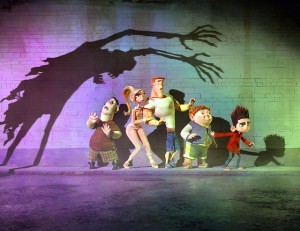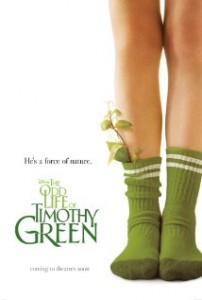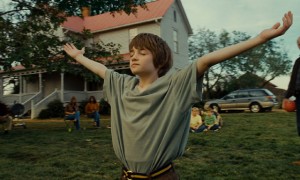ParaNorman
Posted on August 16, 2012 at 6:00 pm
A+| Lowest Recommended Age: | Preschool |
| MPAA Rating: | Rated PG for scary action and images, thematic elements, some rude humor, and language |
| Profanity: | Some schoolyard language ("boobs"), reference to "the f-word" |
| Alcohol/ Drugs: | Brief joke about steroid use |
| Violence/ Scariness: | Cheerfully gruesome storyline about zombies and ghosts with some comic but disturbing images, characters in peril, character dies of natural causes, discussion of the historic abuse and killing of people thought to be witches, bullies |
| Diversity Issues: | Tolerance a theme of the movie, diverse characters include a gay character, some making fun of people who are not intelligent |
| Date Released to Theaters: | August 20, 2012 |
| Date Released to DVD: | November 26, 2012 |
| Amazon.com ASIN: | B005LAII62 |

Norman (Kodi Smit-McPhee) loves to watch old zombie movies with his grandmother as she knits on the living room sofa. Until his parents remind him that his grandmother is dead.
Yes. Norman sees dead people. Perhaps that is why his hair is constantly standing on end. He is fine with it, but it bothers everyone around him. His parents (Jeff Garlin and Leslie Mann) worry about him, his teenage sister Courtney (Anna Kendrick) is annoyed by him, and at school everyone either ignores or bullies him.
When a creepy ghost (John Goodman) appears in the boys’ bathroom at school to warn him that the town will be attacked by zombies, he explains that only Norman can stop them. Before sunset, he must read aloud from an ancient tome at the grave of the witch whose curse turned seven local citizens into zombies centuries before. The lore of the witch’s curse is so central to the town’s identity that there is a statue of a witch in the town square, several local businesses have witchy names, and Norman’s school pageant is a re-telling of the story. Three hundred years ago, when the local citizens condemned a witch to death, she used her powers to condemn them to spending eternity as zombies. But the secret of the book helps Norman discover that the zombies and the witch are not what he thought.
With references to “Scooby-Doo” and “The Goonies,” “ParaNorman” expertly balances scary and funny elements of the story, with a surprisingly heartwarming conclusion. “It’s all right to be scared,” Norman’s grandmother explains, “as long as it doesn’t change who you are.” Norman, Courtney, his friend Neil, Neil’s dim brother Mitch (Casey Affleck), and school bully Alvin (Christopher Mintz-Plasse) have to work together to try to save the town.
The voice performances are excellent and the visuals are dazzling. Every item from the houses to the cars to the lockers in the schools is just a little off-kilter and every detail from Norman’s alarm clock to the zombie’s sagging skin is designed with endless wit and skill. The score by Jon Brion keeps things nicely spooky and the resolution is satisfying. It is too bad that the thoughtful points it makes about bullying are undercut by making fun of not one but two characters who are not bright. The message of reconciliation, kindness, and appreciating differences is a good one, and it should extend to all of the movie’s characters.
Parents should know that this movie’s themes concern zombies and ghosts, and each child will react differently. Some will be enjoyably scared and some will find it funny but even with a reassuring conclusion to the story, some may find the images or storyline upsetting. The film has comic but gruesome images, characters in peril, reference to historic abuse and execution of those claimed to be witches — reassuringly and often humorously presented but some elements of the story and images may be disturbing to children. There is also brief potty humor, a joke about steroids, and a refreshingly positive portrayal of a gay character (a teenage boy briefly mentions his boyfriend).
Family discussion: Who was right about Norman, his mother or his father, and why? Why did Neil want to be friends with Norman? How did Norman help the witch?
If you like this, try: “Monster House,” “The Nightmare Before Christmas,” “The Corpse Bride,” and “Coraline”



